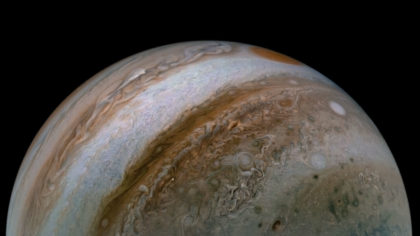
I promised we’d take the occasional break from evolutionary biology and simulated quandaries to check in on other science headlines, and that time has come. I’m going to try a slightly different format, more of a news roundup than a ramble on a single story. The biggest story of course is the landing of the Perseverance Rover on Mars. Below, you can check out video from the landing and the first audio from Mars (these come directly from NASA; there were fake Mars videos going around social media last week).
The technical achievement of the project is exciting, and in the long run we can also look forward to years of scientific results, including updates on the search for Martian life, past or present (probably past). The recently arrived Hope orbiter from the United Arab Emirates (the first Arab country to send a craft to Mars) and Tianwen-1 orbiter and rover (due to arrive in May) from China will also be potential sources of exciting Martian data in coming months. As they orbit the Sun at different speeds, Mars and Earth can get closer together or further apart. So depending on when a Mars mission launches, the trip can be more or less expensive due to varying fuel requirements. Last July was an opportunity to start a relatively more efficient journey, which is why multiple missions launched then and are arriving around the same time.
While Perseverance will be searching for evidence of life of Mars (which may or may not be evidence of a separate origin of life), life on Earth continues to provide surprises. Most recently, sponges were found living on underwater boulders beneath 900 meters of ice and over a hundred miles from open water. While microbes are known to be tolerant of extreme conditions and highly versatile in what they can eat, and mobile animals can be travel far from obvious food sources, stationary filter feeders like sponges are surprising in that kind of environment. They can only live where food can come to them, which must mean some strong currents are delivering dinner from more hospitable environments. I hope someday we can get sequence data from animals like these to get some more insight into where they came from and how long they’ve been there–like the DNA recently extracted from a million-year-old mammoth tooth.
A topic more at the edges of life and ethics than life and survivability is brain organoids. Organoids are lab-grown cell cultures that exhibit some of the structural features and developmental differentiation as in situ organs. There are of course huge differences as well, and organoids are not functional. Still, they offer an opportunity to study development and function at stages where it would be unethical to study a whole person in the same way. Still, particularly when it comes to brain organoids, it is appropriate to ask at what point even just a brain or brain tissue deserves further protection. I don’t think we are there yet, but as we see evidence of maturation with similarities to human development and study how swapping in a single Neanderthal gene changes that development, I think we are moving in that direction.
Did you have a favorite science story from the last few weeks? Tell us about it in the comments!
Andy has worn many hats in his life. He knows this is a dreadfully clichéd notion, but since it is also literally true he uses it anyway. Among his current metaphorical hats: husband of one wife, father of two teenagers, reader of science fiction and science fact, enthusiast of contemporary symphonic music, and chief science officer. Previous metaphorical hats include: comp bio postdoc, molecular biology grad student, InterVarsity chapter president (that one came with a literal hat), music store clerk, house painter, and mosquito trapper. Among his more unique literal hats: British bobby, captain’s hats (of varying levels of authenticity) of several specific vessels, a deerstalker from 221B Baker St, and a railroad engineer’s cap. His monthly Science in Review is drawn from his weekly Science Corner posts — Wednesdays, 8am (Eastern) on the Emerging Scholars Network Blog. His book Faith across the Multiverse is available from Hendrickson.

Leave a Reply